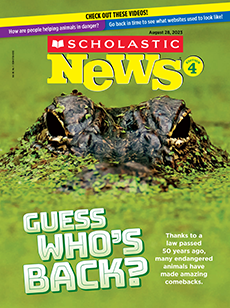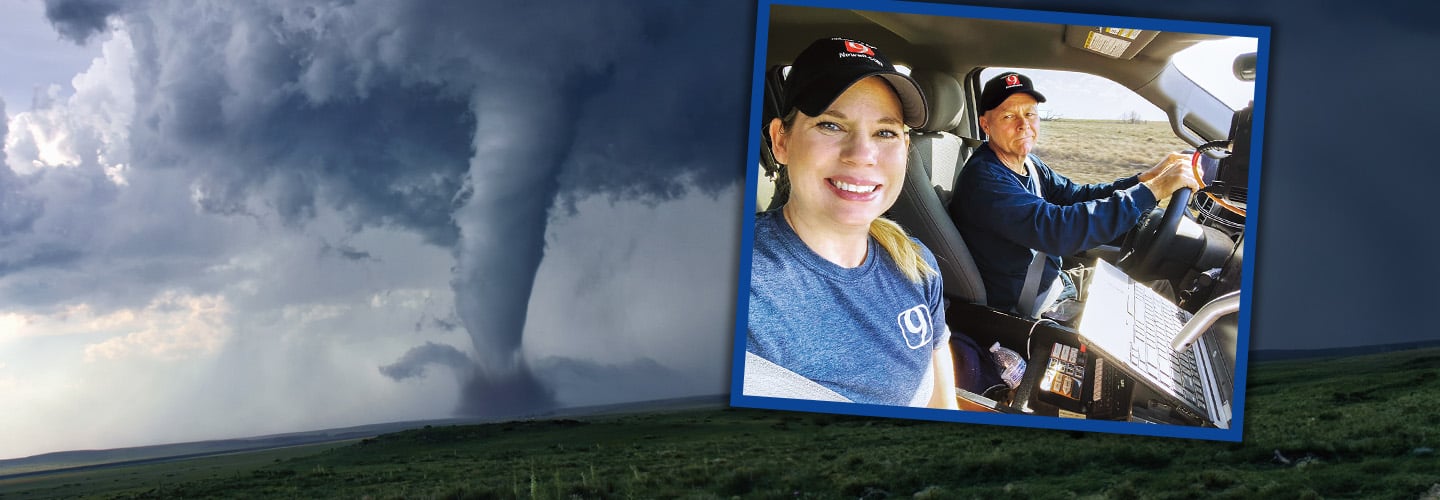Val Castor drove through a blinding thunderstorm. He and his wife, Amy, kept their eyes on the road ahead. It was last May, and the Castors were driving through Arnett, Oklahoma. Pouring rain made it difficult to see through the windshield.
Winds of more than 80 miles per hour rocked their truck. Dirt, branches torn from trees, and other debris began swirling through the sky. Suddenly, a tree was uprooted and flew across the road.
A massive tornado had just touched down a few hundred yards away. Val sped off. But instead of driving away from the twister, he headed toward it.
It’s all in a day’s work for the Castors. They’ve been chasing tornadoes together for more than 25 years. They’re storm trackers for News 9, a TV station in Oklahoma City. They live stream twisters and provide real-time reports to viewers at home.
“It’s a responsibility we don’t take lightly,” Amy says.
Val Castor drove through a blinding thunderstorm. He and his wife, Amy, kept their eyes on the road ahead. It was last May. The Castors were driving through Arnett, Oklahoma. Pouring rain made it difficult to see through the windshield.
Winds of more than 80 miles per hour rocked their truck. Dirt, branches torn from trees, and other debris began swirling through the sky. Suddenly, a tree was uprooted and flew across the road.
A massive tornado had touched down. It was just a few hundred yards away. Val sped off. But he didn’t drive away from the twister. He headed toward it.
It’s all in a day’s work for the Castors. They’ve been chasing tornadoes together for more than 25 years. They’re storm trackers for News 9. That’s a TV station in Oklahoma City. They live stream twisters and provide real-time reports to viewers at home.
“It’s a responsibility we don’t take lightly,” Amy says.

